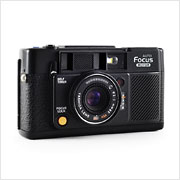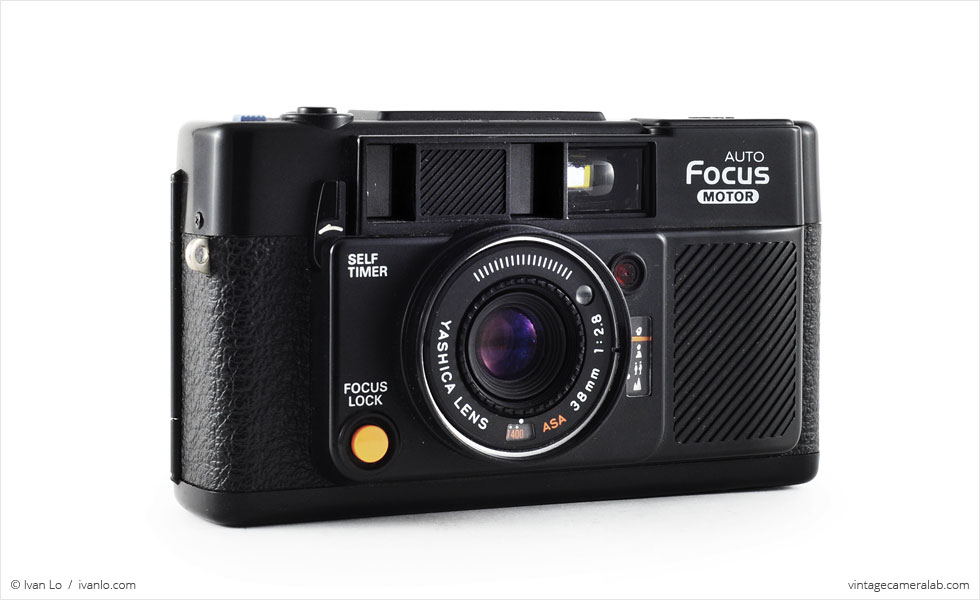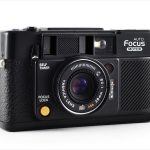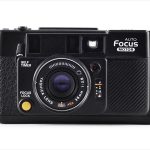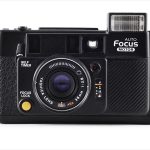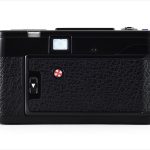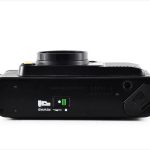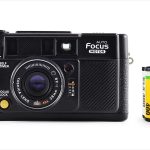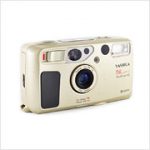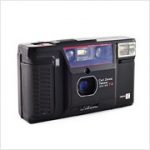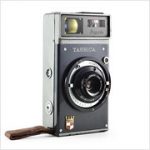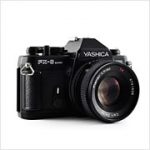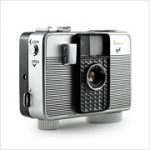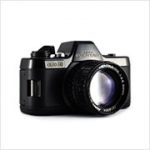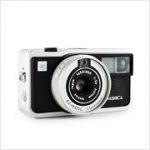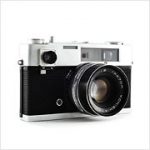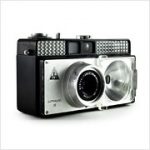Yashica Auto Focus Motor Specifications
| Manufacturer: | Kyocera Corporation for |
| Yashica Company, Ltd | |
| Origin: | Japan |
| Made in: | Hong Kong |
| Introduced: | 1981 |
| Type: | Viewfinder |
| Format: | 135 Film |
| Dimensions: | 13.2 x 7.5 x 5.2 cm |
Yashica Auto Focus Motor Overview
The Yashica Auto Focus Motor (also known as the Yashica 5-Star Auto Focus Motor) is a compact viewfinder camera with autofocus introduced by Yashica in 1981. Yashica underwent many changes during the Auto Focus Motor’s three year production life including being bought out by Kyocera and the beginning of Yashica’s departure from the consumer SLR market to focus on budget point and shoot cameras.
Predating the venerable Yashica T AF by several years, the Auto Focus Motor is the motor-driven evolution of Yashica’s first autofocus viewfinder camera: the Auto Focus of 1978. As mentioned earlier, the Auto Focus Motor has also been referred to in some promotional materials as the 5-Star, so named because of the five automatic systems it boasted: automatic film loading, automatic focus, automatic film advance, automatic exposure, and automatic exposure with flash. The Auto features a 38mm f/2.8 lens mated to an electronically controlled shutter capable of speeds ranging from 1/8 to 1/500 seconds.
By the shutter button on the top plate is a frame counter and a blue shutter lock switch which can be used to prevent unintentional shutter actuation when not in use. On the other side of the top plate is an integrated flash unit which can be activated by pressing down where it says “PUSH” with a flash ready indicator light behind it. The Auto’s autofocus system is initiated by simply pressing the shutter button which prompts the the camera to adjust focus on whatever is in the center of the frame before tripping the shutter. There is also a yellow focus lock button located near the lens that can be used to hold focus on the subject even if you don’t want it dead center. Surrounding the front element of the lens is a knurled plastic ring that is used to select the film speed and next to the lens is an icon-based focus distance indicator with a red self-timer light directly above it which can be activated by pulling the self timer lever on the other side.
I almost didn’t buy this Auto Focus Motor when I spotted it at a thrift store but then I noticed that it had a f/2.8 lens which is uncommonly fast for a point and shoot camera of the era. Plus, it was only 99 cents. It definitely can’t hold a candle to the Carl Zeiss-equipped Yashica T series (of which I own several examples) but it’s still a relatively interesting camera in its own right.
Find your very own Yashica Auto Focus Motor on eBay.
“Yashica Auto Focus series,” Camerapedia, http://camerapedia.wikia.com/wiki/Yashica_Auto_Focus_series
